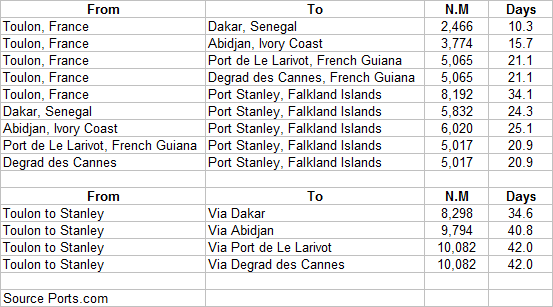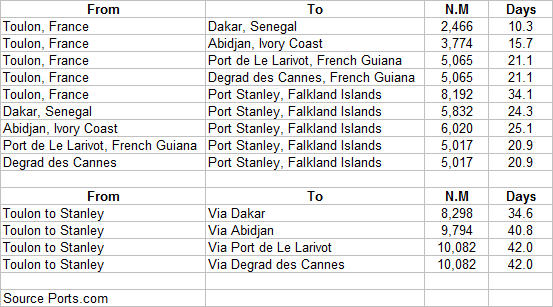Except for the last point. FRENCH GUYANA - that's the key. You forgot that one. Earlier in the thread I used an on-line flying distance calculator to check, and it is the exact same distance from the Falklands as Ascencion island. Only 51 km further, actually.
I didn't forget it. I ignored it.
Ships can't sail across Brazil and the Brazilian Government won't allow overflying rights.
If Brazil did allow overflying rights it would have risked starting a war with Argentina and if Brazil was at war with Argentina.
- Brazil would have allowed France to use Brazilian ports and air bases which were closer than the French bases in Guiana and West Africa.
- The Argentines would be too busy fighting the Brazilians to be bothered about defending the Falklands.
Ah drats, so that's not a matter of distances. Fair enough then. So much for having a forward base the same distance as Ascension, damn it.
And now, something funny: France ALSO brought Tucanos from Brazil, except in the mid-1990's. And the experience was not exactly a good one, the aircraft were retired only 15 years later.
Now, the Fouga Magisters were already quite old in the ealry 1980's, and Alphajets couldn't do everything. Maybe a Tucano deal in exchange for overflights across Brazilian airspace ?
Note that C-135FR and Atlantique 2 have such ranges, they can probably fly around Brazil airspace on the way to the Falklands.
Hence French Guyana can still be used as a forward base for C-135FR, Atlantique 2 and ships - Ascension style - but taking into account that Brazilian overflight issue.
But is it really an issue ? not quite. Since Mirage IVs or Jaguars can't do any Black Buck, hence the AdA is out of the fight... maybe those overflights are not needed in the end.
We discussed the navy transport and logistics issues, but the Armée de l'Air air bridge toward Guyana would face similar issues. Because the bulk of transport squadrons was Transalls - C-130s only came in the late 1980's. Plus a couple of DC-8s, and that's it.
Maybe Air France 747-200F could help, they were used to support Arianespace launch campaigns - so they know their way to Cayenne airport.
Site aéronautique sur les compagnies aériennes et les avions de ligne (vol, voyage, photo, flotte, liste de production, immatriculations des Airbus, Boeing, Douglas, Embraer, ATR, Sukhoi, Saab, Dash...), photos d'avions pour les planespotters, base de donnée historique des vols, référence sur...

www.airfleets.fr
20887 245
747-228F/SCD F-BPVO 01/04/1982
21255 295
747-228F/SCD F-BPVR 13/10/1976
21787 398
747-228F/SCD F-BPVZ 18/09/1979
21576 334
747-228F F-BPVV 09/08/1978
I would say French Guyana would be prefered to Senegal or Ivory Coast, for the following reasons.
- it is a French territory (no political problems)
- with much, much better infrastructures
- better security too (don't forget the Argies had plans to bomb Gibraltar with commandos, if they can reach as far as Europe, then Africa is a softer and closer target).








